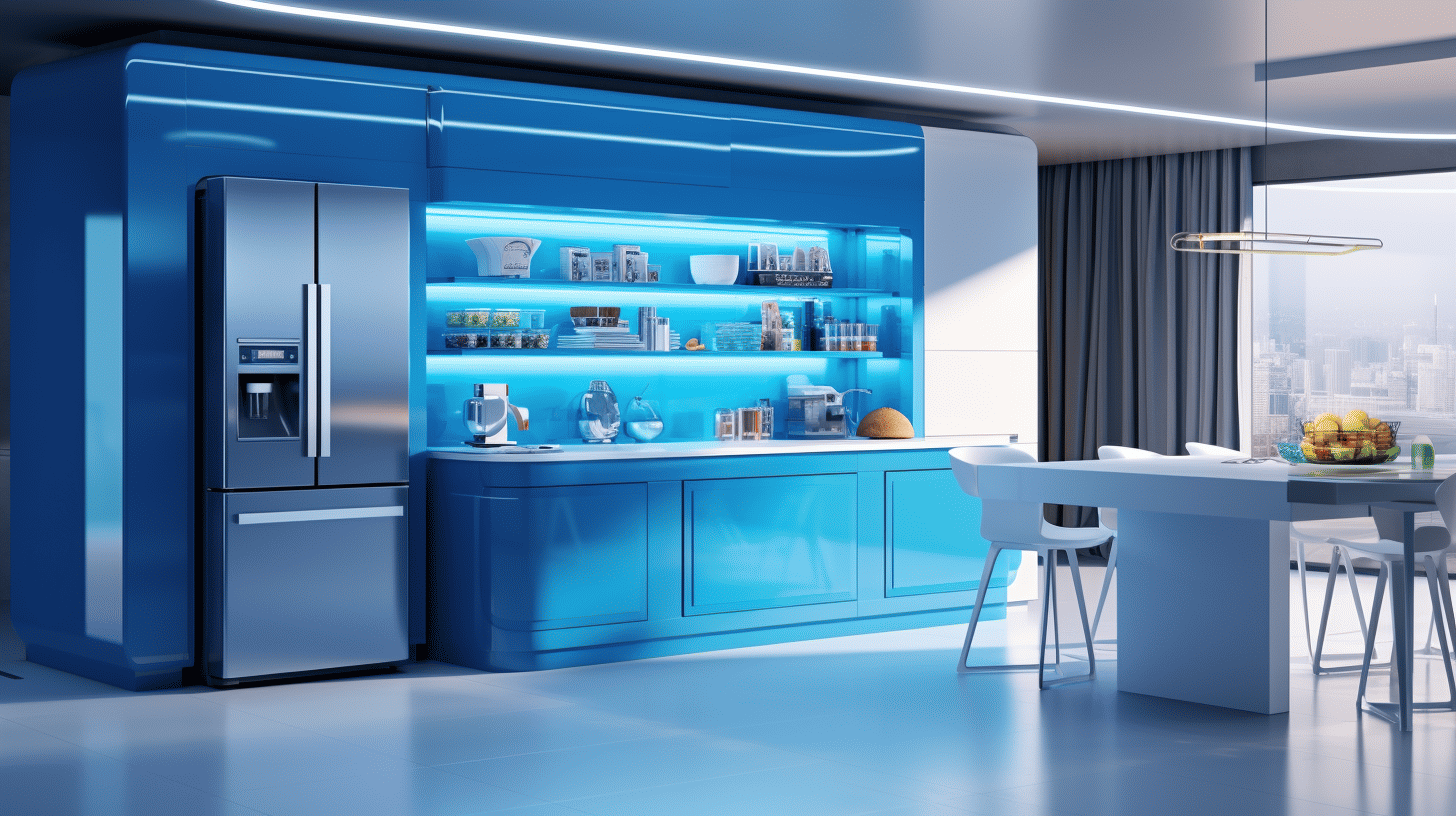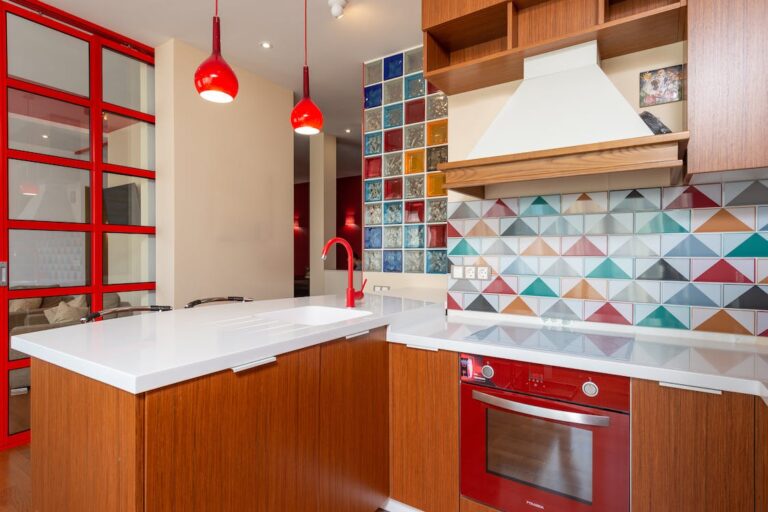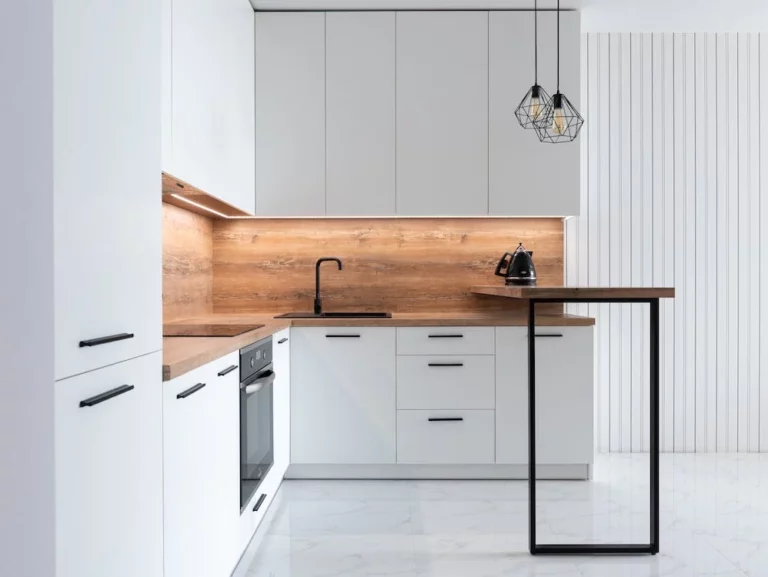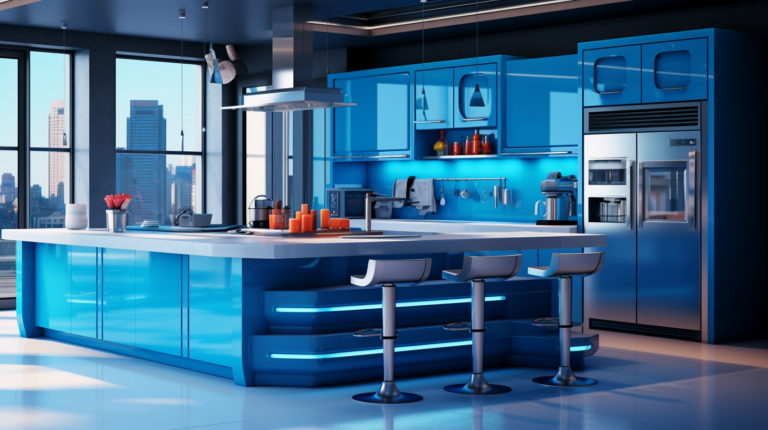Maximize Space and Functionality: Efficient Kitchen Layouts for Homeowners
When it comes to designing a kitchen, homeowners want a space that is not only stylish but also functional. After all, the kitchen is often considered the heart of the home, where meals are prepared, memories are made, and family and friends gather. One key factor in achieving an efficient kitchen layouts.
A well-designed efficient kitchen layouts maximizes space, enhances functionality, and boosts aesthetic appeal. It takes into consideration the available space, the homeowner’s needs and preferences, and the budget. From one-wall kitchens to U-shaped kitchens, each layout has its own advantages and disadvantages. By understanding the different types of kitchen layouts and the factors to consider when choosing one, homeowners can create a kitchen that suits their lifestyle and maximizes both space and functionality.
Table of Contents
Efficient Kitchen Layouts for Homeowners
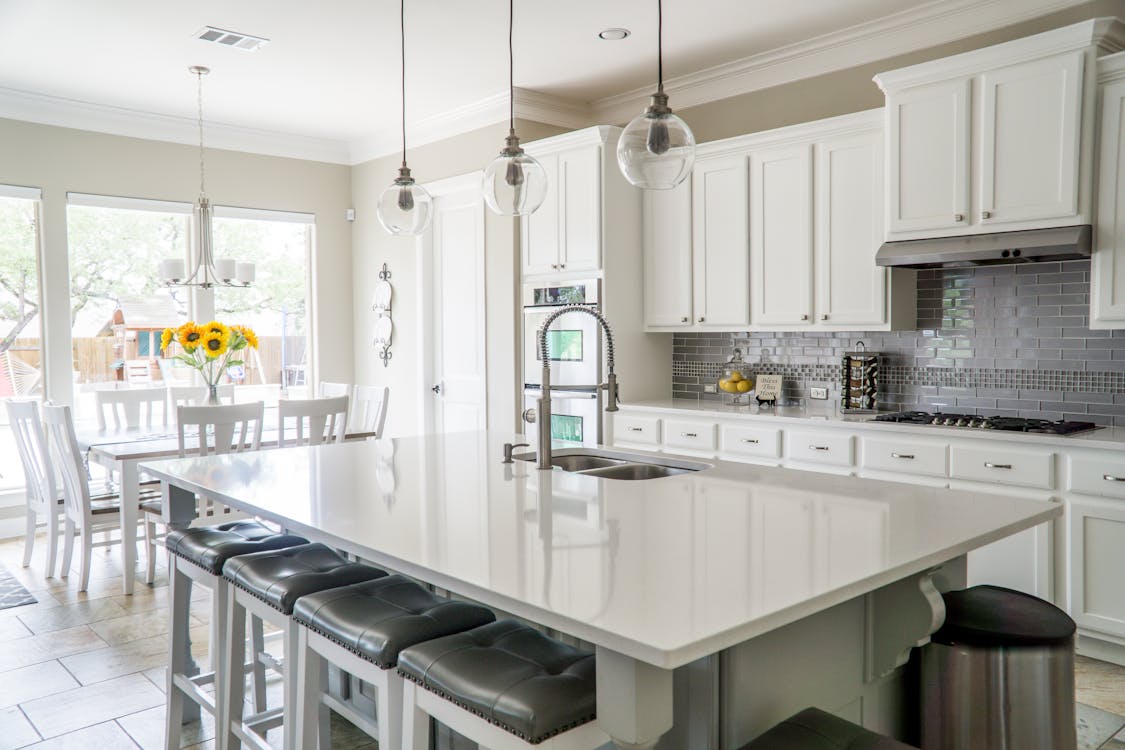
In this article, we will explore the importance of efficient kitchen layouts, discuss the different types of layouts, weigh the pros and cons of each, and provide tips on how to maximize space and functionality in each layout. Whether you’re renovating or building a new home, this guide will help you make informed decisions and create a kitchen that is not only visually appealing but also highly functional. Let’s dive in!
The layout of a kitchen plays a crucial role in enhancing its overall functionality and efficiency. A well-designed kitchen layout maximizes the available space, ensures smooth workflow, and adds to the aesthetic appeal of the space. Whether you are a home cook or a professional chef, having an efficient kitchen layouts can make a world of difference in your cooking experience. In this section, we will explore three key reasons why an efficient kitchen layouts is important.
Maximizing Space
One of the primary benefits of an efficient kitchen layouts is the ability to make the most of the available space. A well-designed layout takes into consideration the size and shape of the kitchen and optimizes the placement of appliances, cabinets, and countertops.
Here are a few ways an efficient kitchen layout maximizes space:
- Utilizing corner spaces: A corner cabinet or appliance that can be easily accessed helps prevent wasted space in the kitchen.
- Smart storage solutions: Pull-out drawers, vertical cabinets, and overhead racks ensure that every inch of available space is utilized effectively.
- Proper spacing between work zones: A well-planned kitchen layout ensures that there is enough space between the cooking area, food preparation area, and cleaning area, allowing for smooth movement and reducing clutter.
By maximizing space, an efficient kitchen layouts allows for better organization, easier access to tools and ingredients, and ultimately, a more enjoyable cooking experience.
Enhancing Functionality
Another key aspect of an efficient kitchen layouts is its ability to enhance functionality. A well-thought-out layout ensures that everything is within reach and that the kitchen workflow is streamlined.
Here are a few ways in which an efficient kitchen layouts enhances functionality:
- Intuitive workflow: The layout is designed to facilitate a logical and efficient workflow, allowing for easy movement between different work areas.
- Work triangle optimization: The positioning of the sink, refrigerator, and stove – commonly referred to as the work triangle – is optimized for convenience and efficiency.
- Adequate counter space: An efficient kitchen layouts provides ample counter space for prepping ingredients, plating dishes, and accommodating small appliances.
By enhancing functionality, an efficient kitchen layouts saves time and effort, making cooking a more enjoyable and efficient process.
Boosting Aesthetic Appeal
Beyond practicality and functionality, an efficient kitchen layouts also contributes to the overall aesthetic appeal of the space. A well-designed layout ensures a harmonious arrangement of elements and a visually pleasing environment.
Here are a few ways in which an efficient kitchen layout boosts aesthetic appeal:
- Cohesive design: The layout is designed to work seamlessly with the overall design theme of the kitchen, creating a cohesive and visually appealing space.
- Balance of form and function: An efficient layout not only prioritizes functionality but also pays attention to aesthetic details, striking a balance between form and function.
- Clever storage solutions: By incorporating stylish and practical storage solutions, such as open shelving or glass-front cabinets, an efficient kitchen layout showcases both functionality and style.
By boosting aesthetic appeal, an efficient kitchen layouts transforms the kitchen into a welcoming and attractive space that you’ll love spending time in.
In conclusion, an efficient kitchen layouts is essential for maximizing space, enhancing functionality, and boosting the aesthetic appeal of your kitchen. Whether you’re whipping up a quick weeknight dinner or hosting a dinner party, a well-designed layout can make all the difference in how smoothly and effortlessly you can prepare your meals. So, take the time to plan and design a kitchen layout that suits your needs and preferences, and enjoy the benefits of a well-organized and efficient kitchen layouts.
Popular Efficient Kitchen Layouts

When it comes to designing a kitchen, one of the key decisions to make is choosing the right layout. The layout of a kitchen determines its functionality, efficiency, and overall aesthetic appeal. There are several different types of kitchen layouts to consider, each with its own unique advantages and considerations. Let’s explore some of the most popular kitchen layouts and what makes them special.
One-wall kitchen
The one-wall kitchen layout is ideal for smaller spaces or open floor plans where space is limited. As the name suggests, all the kitchen elements are aligned along a single wall, making it a compact and efficient option. This layout typically includes the countertop, sink, stove, and refrigerator, all in a linear arrangement.
Here are some highlights of the one-wall kitchen layout:
- Saves space: Perfect for studio apartments or smaller kitchens with limited square footage.
- Seamless workflow: With everything within arm’s reach, preparing meals becomes a breeze.
- Minimalist aesthetic: The streamlined design offers a sleek and modern look.
Galley kitchen
The galley kitchen, also known as a corridor kitchen, is a popular layout that maximizes efficiency and functionality. In this layout, two parallel walls are utilized, creating a central corridor for easy movement.
Here’s what makes the galley kitchen a practical choice:
- Efficient use of space: The layout optimizes every inch of available space.
- Workflow separation: The two parallel walls create a clear division between the cooking and prep areas.
- Ample storage: With two walls of cabinets and countertops, there’s plenty of room for storage and organization.
L-shaped kitchen
An L-shaped kitchen layout features countertops and cabinets that form an L-shape, utilizing two adjacent walls. This layout offers versatility and ample counter space.
Here’s why many homeowners opt for an L-shaped kitchen:
- Open and spacious: The open design allows for easy traffic flow and interaction.
- Plenty of countertop space: The L-shaped configuration provides ample room for cooking, prepping, and entertaining.
- Options for customization: The design can accommodate various appliances, workstations, and dining areas.
U-shaped kitchen
The U-shaped kitchen layout is a popular choice for larger kitchens, providing plenty of storage, counter space, and room for multiple cooks. This layout utilizes three walls, forming a U shape.
Here’s why U-shaped kitchens are often preferred:
- Abundant storage: The three walls of cabinets and countertops offer ample storage space.
- Efficient workflow: With everything within reach, meal preparation is a breeze.
- Versatility: The U-shape allows for flexible design options, such as incorporating a kitchen island.
Island kitchen
An island kitchen layout features a standalone countertop or workspace in the center of the kitchen, providing extra storage, prep space, and a designated area for seating.
Here’s why an island kitchen is a popular choice:
- Additional storage and workspace: The island adds more cabinets, drawers, and countertop space to the kitchen.
- Social hub: The island becomes a focal point for socializing and entertaining guests.
- Multifunctional: The space can be used for prepping, cooking, dining, and even as a homework or work area.
In conclusion, choosing the right efficient kitchen layouts is crucial for creating a functional and aesthetically pleasing space. Whether you opt for a one-wall, galley, L-shaped, U-shaped, or island kitchen, each layout offers unique advantages that cater to different needs and preferences. Considering factors such as available space, workflow efficiency, and desired aesthetics will help you make a well-informed decision when designing your dream kitchen.
Pros and Cons of Efficient Kitchen Layouts

When it comes to designing your dream kitchen, the layout is one of the most critical factors to consider. The right layout can enhance efficiency, workflow, and overall aesthetics, while the wrong one could leave you feeling cramped and frustrated. In this article, we’ll explore the pros and cons of efficient kitchen layouts to help you make an informed decision for your space.
One-wall kitchen pros and cons
A one-wall kitchen, as the name suggests, features all appliances, cabinets, and countertops along a single wall. This layout is ideal for smaller spaces or open floor plans where the kitchen seamlessly blends with the rest of the living area.
Here are some pros and cons to consider:
Pros:
- Space-efficient design, making it perfect for small homes or studio apartments.
- Minimalistic and sleek appearance for a modern aesthetic.
- Easy to navigate and access all areas of the kitchen.
Cons:
- Limited counter and storage space compared to other layouts.
- Not ideal for multiple people working simultaneously in the kitchen.
- May lack the traditional “work triangle” efficiency of other layouts.
Galley kitchen pros and cons
A galley kitchen consists of two parallel countertops with a walkway in between. This layout maximizes efficiency by creating a functional work triangle between the sink, stove, and refrigerator. Let’s explore the pros and cons:
Pros:
- Provides an efficient and ergonomic workflow, especially for one cook.
- Great for small and narrow spaces.
- Allows for ample storage and counter space.
Cons:
- Can feel cramped and lack privacy, especially with limited width.
- Might require careful planning to ensure proper ventilation and lighting.
- Limited space may restrict the number of appliances and accessories you can incorporate.
L-shaped kitchen pros and cons
An L-shaped kitchen features countertops and cabinets aligned along two adjacent walls, forming an “L” shape. This layout is versatile and popular among homeowners.
Let’s weigh the pros and cons:
Pros:
- Provides more storage and counter space compared to a one-wall or galley layout.
- Offers flexibility in design and arrangement.
- Can accommodate multiple cooks and allow for social interaction while cooking.
Cons:
- Requires careful planning to optimize corner space effectively.
- Limited wall space for appliances and cabinets compared to other layouts.
- Traffic flow might be interrupted if not properly designed.
U-shaped kitchen pros and cons
In a U-shaped kitchen, cabinets and appliances line three walls to form a “U” shape. This layout is known for its efficient workflow and ample storage space.
Let’s take a closer look at the pros and cons:
Pros:
- Maximizes storage and counter space, making it ideal for larger families or avid cooks.
- Offers a well-defined work triangle with easy access to appliances.
- Allows for efficient traffic flow in the kitchen.
Cons:
- Requires a larger area to accommodate the U-shaped configuration.
- May feel enclosed or cramped if not properly designed.
- More challenging to incorporate an island or dining area compared to other layouts.
Island kitchen pros and cons
An island kitchen incorporates a freestanding counter or island in the center of the kitchen, creating additional workspace and often serving as a gathering spot.
Let’s explore the pros and cons:
Pros:
- Provides extra counter and storage space.
- Allows for socializing and entertaining while cooking.
- Creates a focal point and adds visual interest to the kitchen.
Cons:
- Requires enough space to accommodate the island without overcrowding the kitchen.
- May interfere with traffic flow if not properly planned.
- Adds additional cost for construction and installation.
Remember, the ideal kitchen layout for your home will depend on factors such as the size and shape of your space, your cooking habits, and your personal preferences. By considering the pros and cons of these different kitchen layouts, you can make an informed decision that will ensure your kitchen functions efficiently and beautifully.
Choosing the right kitchen layout

Have you ever walked into a kitchen and thought to yourself, “Wow, this layout is perfect”? The truth is, a well-designed kitchen layout can make all the difference in how efficient and enjoyable your cooking and dining experience is. When it comes to choosing the right layout, there are several factors to consider. Let’s dive in and explore what they are:
1. Available Space
The first and most obvious factor to consider when choosing a kitchen layout is the amount of space you have available. Whether you have a small apartment kitchen or a spacious open-concept layout, the size and shape of your kitchen will determine which layout options are feasible.
- Small kitchens: If you have a limited amount of space, you’ll want to consider space-saving layouts that maximize efficiency. U-shaped or galley kitchens are great options for maximizing storage and work surfaces in a small footprint.
- Large kitchens: On the other hand, if you have a generous amount of space, you have the luxury of exploring more expansive layouts. L-shaped or island kitchens offer ample counter space and room for entertaining guests.
2. Kitchen Function
The next factor to consider is how you plan to use your kitchen. Do you enjoy baking elaborate desserts, or are you more of a quick and simple cook? Understanding the function of your kitchen will help you determine the most suitable layout options.
- Baker’s delight: If you love baking and need plenty of counter space for rolling out dough and cooling racks, a kitchen layout with a large central island or peninsula will come in handy. This provides ample space for prepping, baking, and serving.
- Efficient cook: If your cooking style is more focused on quick and simple meals, a compact and streamlined layout like a galley or L-shaped kitchen might be more suitable. These layouts minimize the distance between workstations, making it easy to move from slicing and dicing to stovetop cooking.
3. Personal Preference
Your personal preference and lifestyle should also weigh heavily on your decision. After all, your kitchen is a reflection of your taste and personality. Consider the following factors when determining which layout best aligns with your preferences:
- Open concept: If you love hosting gatherings and entertaining guests while preparing meals, an open concept kitchen that flows into a dining or living area may be your dream layout. This design allows for seamless entertaining and creates a social hub in your home.
- Traditional or modern: Think about the overall aesthetic you want to achieve. Do you prefer a traditional and cozy kitchen with warm colors and classic cabinetry? Or are you more drawn to a sleek and contemporary design with clean lines and minimalist elements? The layout you choose should complement the style you envision.
4. Budget Considerations
Lastly, budget considerations play a significant role in choosing a kitchen layout. Some layouts, such as custom-designed kitchens or those with high-end materials and appliances, can be more expensive. It’s important to establish your budget early on to ensure you find a layout that meets your needs without breaking the bank.
- Cost-effective options: If you’re working with a limited budget, there are plenty of cost-effective layout options available. Consider choosing pre-designed modular kitchens or exploring DIY alternatives that can save you money on installation and customization.
- Investment layouts: On the other hand, if you have a larger budget and see your kitchen as an investment for the long term, you may opt for a more high-end layout. This could include custom cabinetry, luxury appliances, and premium materials that enhance the overall value and aesthetic appeal of your kitchen.
Choosing the right kitchen layout is a crucial decision that can greatly impact the functionality and enjoyment of your space. By taking into account factors such as available space, kitchen function, personal preference, and budget considerations, you can make an informed choice that will result in a kitchen that suits your needs and reflects your unique style. So, take your time, explore different options, and create the kitchen of your dreams!
Tips for Efficient kitchen layouts
Are you looking to make the most out of your kitchen space? Whether you have a small apartment or a spacious home, optimizing the layout and functionality of your kitchen can significantly enhance your cooking experience. In this article, we’ll explore some practical tips to maximize space and functionality in each efficient kitchen layouts. From space-saving ideas to organization hacks, we’ve got you covered.
Space-saving tips for one-wall kitchen
The one-wall kitchen layout, as the name suggests, is characterized by all the appliances and counters arranged along a single wall. While this layout is ideal for compact spaces, it can sometimes be challenging to incorporate all the necessary elements without compromising on functionality.
Here are some space-saving tips for a one-wall kitchen:
- Utilize vertical space: Install open shelves or hang racks on the walls to store frequently used items such as pots, pans, and utensils. This will free up valuable counter space.
- Invest in compact appliances: Opt for smaller appliances that are designed specifically for compact kitchens. Look for narrow refrigerators, slim dishwashers, and compact stoves to maximize space.
- Use multifunctional furniture: Consider incorporating a kitchen island with built-in storage or a dining table that can double as a workspace. This will provide additional storage and functionality.
Functionality tips for galley kitchen
Galley kitchens, characterized by two parallel counters, offer an efficient layout that optimizes workflow. However, to make the most out of this design, it’s essential to focus on functionality.
Here are some tips to enhance the functionality of your galley kitchen:
- Create designated work zones: Divide your kitchen into different sections for prepping, cooking, and cleaning. This will help streamline the workflow and make tasks more efficient.
- Install good lighting: Adequate lighting is crucial in a galley kitchen. Utilize under-cabinet lighting or pendant lights to illuminate the workspace effectively.
- Optimize storage: Use every inch of available space by installing pull-out shelves, hanging hooks, and organizers. This will help maintain a clutter-free kitchen and make items easily accessible.
Seating and storage tips for L-shaped kitchen
L-shaped kitchens offer plenty of counter space and flexibility. To maximize the functionality of this layout, here are some tips for seating and storage:
- Consider a kitchen island: If space allows, incorporate a kitchen island into the design. This will provide additional seating, storage, and workspace.
- Install a corner banquette: Utilize the corner of your L-shaped kitchen by installing a corner banquette with built-in storage. This will create a cozy seating area while maximizing storage space.
- Utilize vertical space: Install tall cabinets or open shelves on the walls to store items that are used less frequently. This will free up counter space for cooking and food preparation.
Workflow tips for U-shaped kitchen
U-shaped kitchens offer ample counter and storage space, making them highly functional. However, to optimize the workflow in this layout, consider the following tips:
- Create a work triangle: Arrange your refrigerator, stove, and sink in a triangular configuration. This will minimize the distance between the three essential elements and make cooking more efficient.
- Install a central island: If space allows, consider adding a central island to your U-shaped kitchen. This will provide additional workspace and seating options.
- Optimize storage: Use pull-out shelves, dividers, and organizers to maximize storage space in your U-shaped kitchen. This will ensure that everything is easily accessible and well organized.
Multipurpose island tips for island kitchen
An island kitchen layout offers a centralized workspace that can serve multiple purposes. To make the most out of your kitchen island, consider the following tips:
- Install a sink or cooktop on the island: Adding a sink or cooktop on your kitchen island will create a separate workstation and make multitasking easier.
- Incorporate seating: Install bar stools or create a dining area with seating around the island. This will provide a casual dining space and act as a gathering spot for family and friends.
- Create storage solutions: Incorporate drawers, shelves, or cabinets into your kitchen island to maximize storage space. This will help keep your kitchen organized and clutter-free.
By implementing these tips, you can maximize the space and functionality of your kitchen, regardless of its layout. Whether you have a one-wall kitchen or an island kitchen, there are always creative solutions to make the most out of your available space. Happy cooking!
Conclusion
In conclusion, an efficient kitchen layout is a key element in maximizing space and functionality within the home. By carefully considering the available space, kitchen function, personal preference, and budget considerations, homeowners can choose a layout that suits their needs and enhances their cooking experience.
Each kitchen layout offers its own set of pros and cons, and it’s important to weigh these factors before making a decision. The one-wall kitchen is great for small spaces and offers simplicity in design, while the galley kitchen provides a streamlined workflow for those who enjoy cooking. The L-shaped kitchen offers ample storage and seating options, while the U-shaped kitchen allows for optimal traffic flow. Finally, the island kitchen brings multifunctionality and additional countertop space to the forefront.
When designing your kitchen, consider implementing space-saving techniques for the one-wall kitchen, functionality tips for the galley kitchen, seating and storage solutions for the L-shaped kitchen, workflow enhancements for the U-shaped kitchen, and innovative ideas for a multipurpose island in the island kitchen.
By taking these factors into account and implementing the appropriate design elements, homeowners can create kitchens that not only maximize space and functionality but also boost the overall aesthetic appeal of their homes.
A well-designed kitchen layout is not only a practical investment, but it also becomes the heart of the home, where families gather, friends connect, and memories are made. So, whether you have a small space or a large one, it’s crucial to choose a kitchen layout that fits your needs and enhances your lifestyle.
Remember, when it comes to kitchen design, there is no one-size-fits-all solution. It’s all about finding the perfect balance between space, functionality, and personal style. So take your time, explore your options, and create a kitchen that reflects your unique personality and makes cooking a joyous experience every day.
Also Read : Minimalist Kitchen Ideas : Streamlining Your Cooking Space in 2023
Frequently Asked Questions
- What are the most efficient kitchen layouts for homeowners?The most efficient kitchen layouts for homeowners are: 1. U-shaped, 2. L-shaped, 3. Galley, 4. Island, and 5. Peninsula. Each layout offers different advantages and suits different spaces and preferences.
- What is the advantage of a U-shaped kitchen layout?A U-shaped kitchen layout maximizes storage and countertop space, provides ample room for multiple users, and allows for efficient workflow with its three-wall design.
- What makes an L-shaped kitchen layout popular?An L-shaped kitchen layout is popular because it optimizes corner spaces, offers flexibility for various kitchen sizes, and provides a more open and spacious feel.
- What are the benefits of a galley kitchen layout?A galley kitchen layout utilizes space efficiently by having parallel countertops and storage on two opposing walls, allowing for easy movement between work areas.
- What is the purpose of an island in a kitchen layout?An island in a kitchen layout serves as additional workspace, storage, and often a place for informal seating, making it a versatile and functional option for homeowners.

